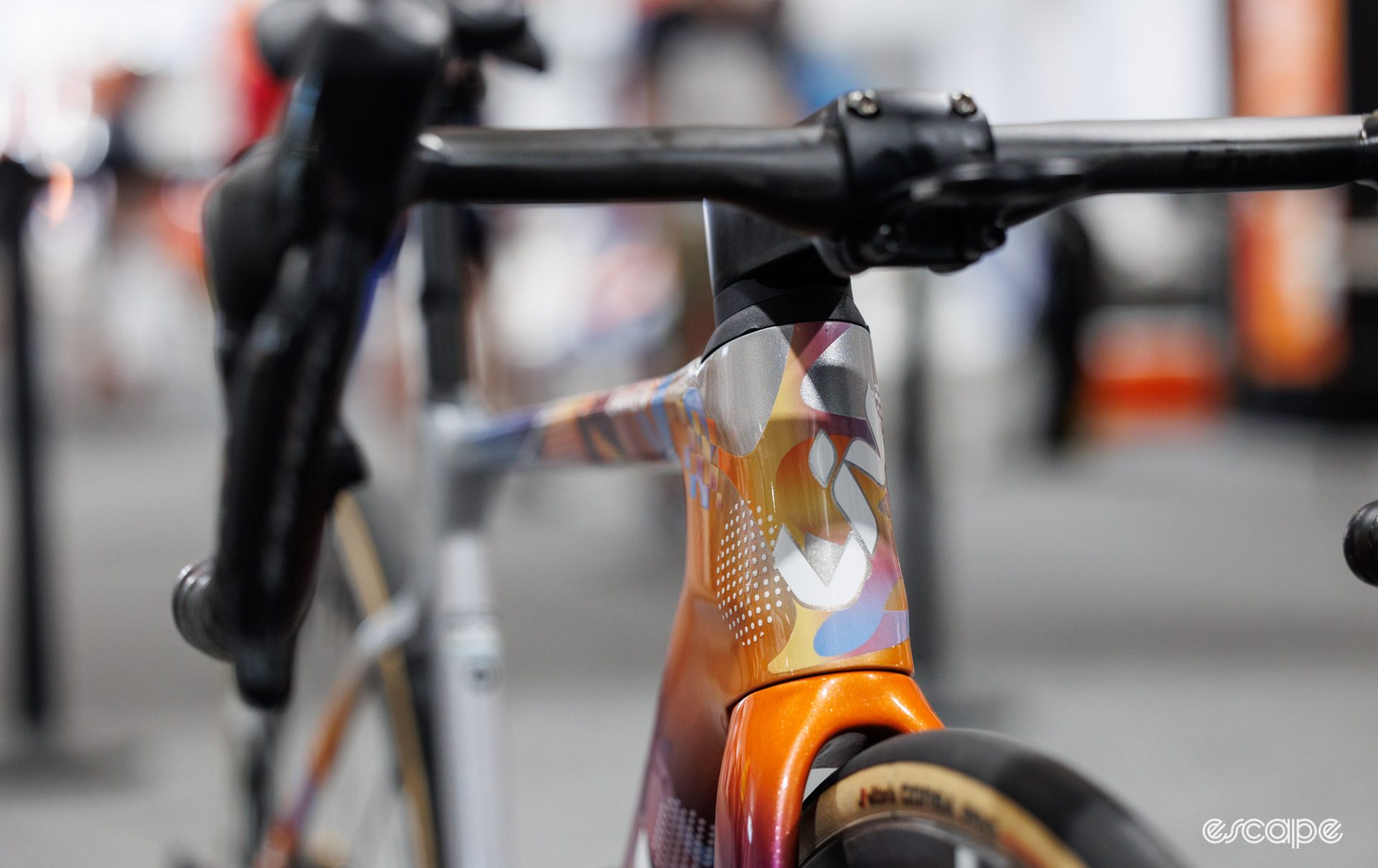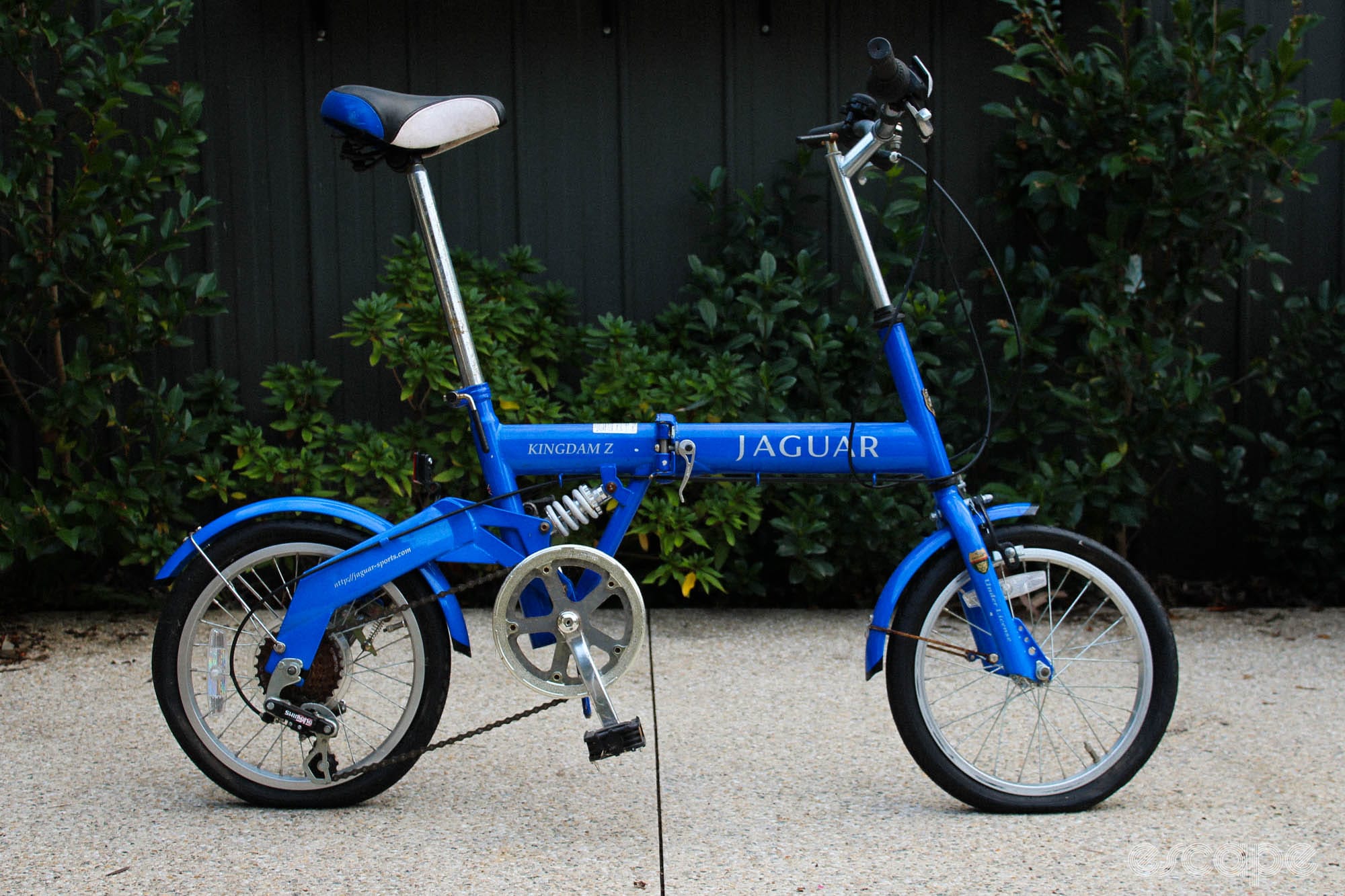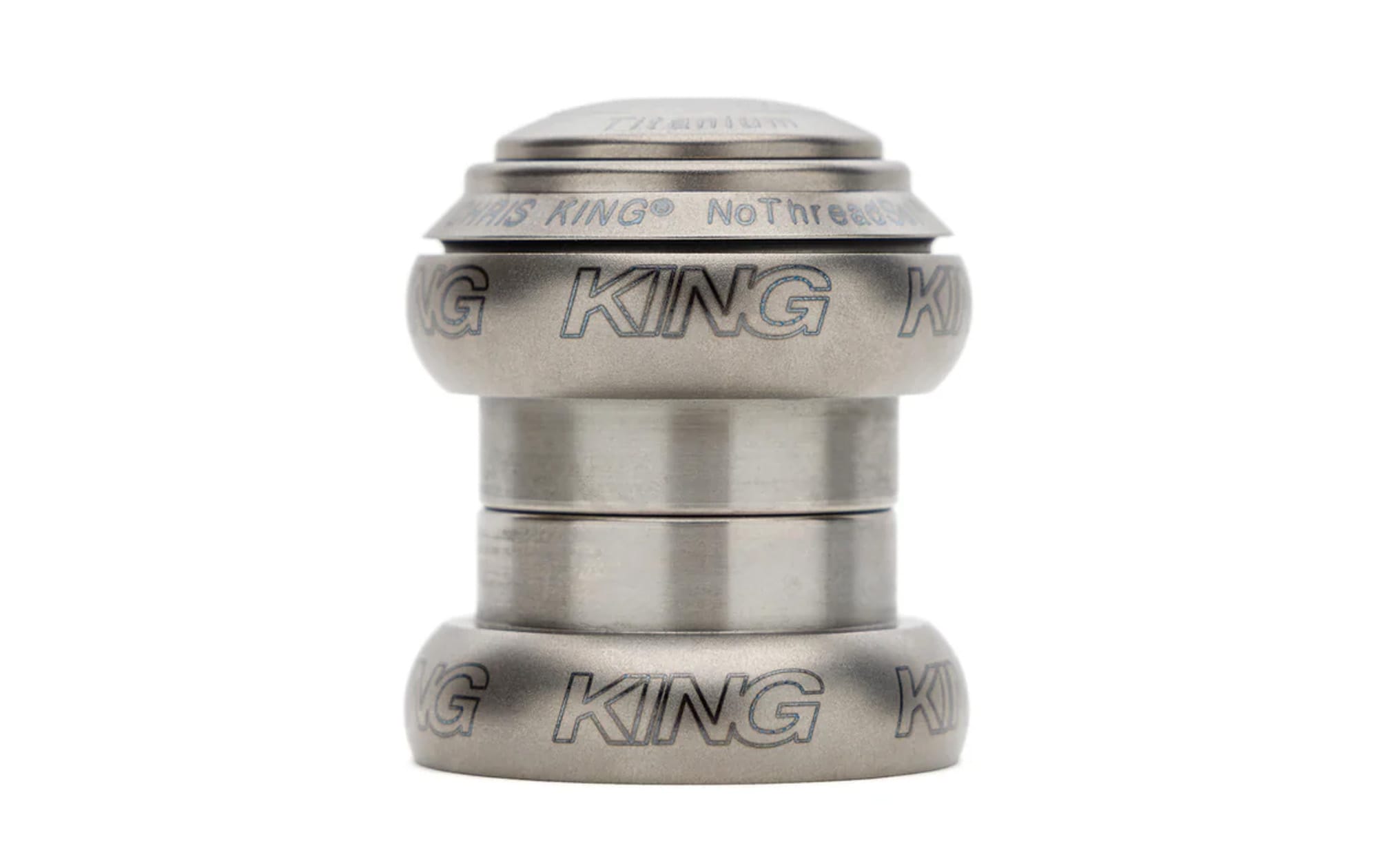What does a head tube tell us about a bike’s overall performance? Potentially quite a bit. Brands have adopted internal cable routing, aero profiles, overall tube depth, trip strips, air deflectors, and bayonet steerer tubes to varying degrees, but walking the pits at the Down Under Classic, the sheer number of different takes on head tube design was a particular draw in a paddock full of new and old designs.
While no single aspect will make or break a bike, surprisingly, the seemingly simple head tube can tell us quite a bit about the overall concept, effectiveness, and attention to detail in the various aero interventions and even overall aero-bike design.
The head tube is the first part of the frame to meet the wind. As such, what brands do with the smallest tube on a bike can, in some ways, make or break the overall aero efficiency of the frame. The move to internal cables may well be more aesthetically pleasing in many cases, but it was initially touted as a drag-saving design intervention. We all know of the servicing woes internal routing creates, but what is less understood is whether the aero benefit is worth that hassle and if the saving is equal across every frame. One knock-on side effect of internal routing for many frames was an increase in head tube thickness, and some have speculated that any increase in tube thickness could quickly negate the aero gains of hidden cables.

In contrast, narrower head tubes, by their very nature, create less frontal area. Aerodynamics are a lot more complicated than simply "narrower equals faster," but less frontal area will reduce the A (area) in CdA. In simple terms, CdA is the coefficient of aerodynamic drag times the area; if a head tube is twice the hieght, its Cd will not change, but its A will, and thus, its CdA will increase. Likewise, if it's less aerodynamic but its height remains the same, the CdA will also increase. While the overall profile or how “slippy” an object is, its “Cd” is vitally important, especially when it comes to rider positions, reducing the head tube width on a frame is a fairly safe bet if you want to improve the aerodynamic performance of a frame, more so than by reducing the frontal area of a rider.
The difficulty, though, is combining a narrow head tube with hidden cable routing. The question then is how aero-effective has the past decade of continually integrated frame designs really been? More accurately: where is the sweet spot between head tube width and internal routing? Which internal designs are truly aero and which have simply been aero-marketing?


Walking through the pits down under, it seems that 2024 is the year that question may shift. Aero frame designers are apparently now diverting their head tube thinking towards reducing the width to new lows rather than solely ticking the box of hiding hoses out of sight. Narrower coupled with internal routing should equal faster, and head tube width is quickly becoming the (visual) acid test for assessing a frame's true aero potential.
Narrow head tubes are nothing new; designers and riders alike have long understood the benefits of reducing frontal area. Thinner head tubes aren’t even new when viewed through the internal routing lens, and first appeared on countless time trial bikes. But it seems their adoption on road frames is set to soar as aerodynamicists look for new avenues for reducing drag and engineers find ways of reducing the width while retaining front-end stiffness and overall balance.
The new Giant Propel coupled internal routing with a narrower head tube, as did the new BMC Teammachine R. The Cervelo S5 uses an external steerer to reduce the frontal area and increase overall front-end depth, while the unreleased but recently spotted new Factor Astro VAM is visibly narrower than most.


Does that mean these bikes are the fastest? Well, not necessarily, but it's a good first step. Increasing the head tube depth tackles the Cd element – again, how slippy an object is – of improving a frame’s aero efficiency. The UCI’s decision to relax its regulations on the “aspect ratio” of a frame's tubes has opened a whole new avenue for designers to tackle the drag element of frame design. It’s no coincidence that manufacturers have trended towards deeper and truncated head tube profiles since the UCI made this change. The deeper profiles help smooth the airflow over the head tube and combined with the truncated rear side of the tube, aid in reattaching the flow behind the tube. These interventions reduce the Cd of a tube and thus make it “slippier.”


Deeper tubes are very much “in vogue” of late, with manufacturers employing this aero concept in everything from time trials to aero road frames to climbing bikes. Coupling these deeper tubes with narrower frontal profiles looks like the latest trend and, at least on paper, is seemingly the magic formula for improving front-end aerodynamics. Factor in how important the front end is to a frame’s overall aero-performance and it’s easy to understand why brands are adopting similar design cues in fork legs and handlebar tops, and could potentially explain some of the aero improvements brands are claiming to find despite assumptions bike design had already reached “peak aero." If the marketing claims are to be believed, these front-end advancements even allow manufacturers to sacrifice rear-end aero profiling with a view to saving weight in these typically less aero-dependent areas.

Going narrower is presumably a goal for every designer, but again, such interventions are easier said than done. The front end must maintain stiffness and include a headset because, well, riders need to steer. As such, how this narrowness is achieved differs from manufacturer to manufacturer. Some have adapted non-round steerer tubes as they battle with building head tubes and headsets that retain stiffness while also including bearings large enough to route hoses and a steerer tube through. As mentioned earlier, some have turned to external, bayonet style head tube designs, others have reduced width in the space between the top and bottom bearings, while others like Pinarello and Specialized have adopted forward-swooping head tubes. And more recently, Factor has set its headset and steerer tube further forward in the head tube to free up width, which reduces space in front of the steerer.
Historically, other brands have adopted alternative measures to improve front-end aero efficiency. Ridley has long since incorporated roughened surface textures or so-called “trip strips” into the paintwork on either side of the head tube. The theory being that introducing a boundary layer trip strip on the side of a head tube reduces laminar separation over the tube. In simpler terms, roughening the surface of a specific area either side of the head tube trips or tricks the airflow into reattaching to the tube and reducing drag rather than transitioning to turbulent non-attached flow, which greatly increases drag.


Bianchi took a different approach to front end aerodynamics in adding “air deflectors” to the sides of the head tube on its Oltre XR4. In isolation, the air deflectors add drag to the frame, but Bianchi claims they reduce overall drag by accelerating airflow through the space between the frame and deflector, with the resulting low-pressure zone behind the deflector reducing drag on the rider's legs – an entirely different concept to reducing head tube CdA. Those deflectors are not permitted under UCI regulations, and as such you won't see them in any UCI sanctioned events.
All that is to say, while no single element of a frame will make or break a bike, surprisingly, the head tube can tell us a great deal about the intention behind the design as a whole. With 2024 scheduled to be “a big year” for new performance bikes, the head tube could prove the new battleground for manufacturers and a basic acid test for us consumers to determine the aero competence of any new frame.
Escape Collective is on the ground in Adelaide so expect plenty more tech in the coming days and a round up of all the 2024 World Tour bikes.
Did we do a good job with this story?





